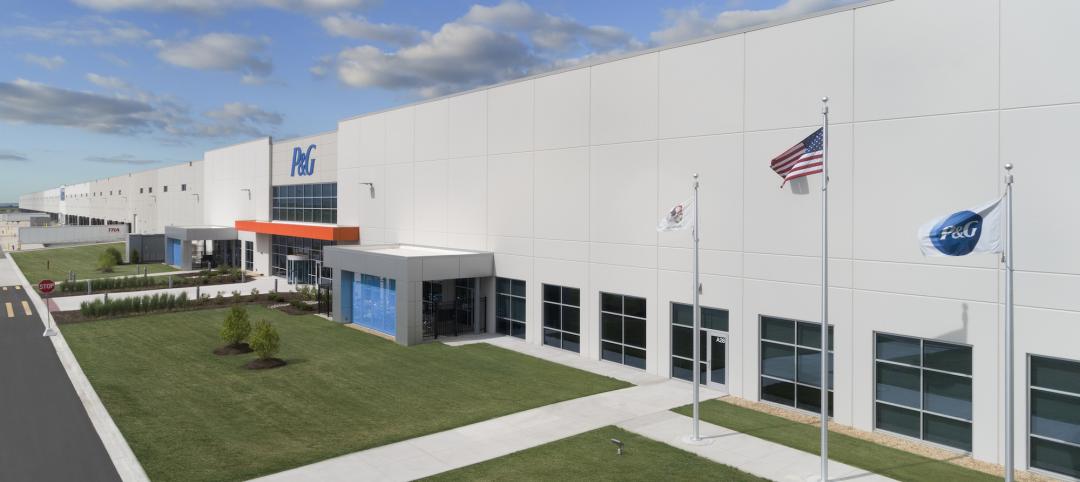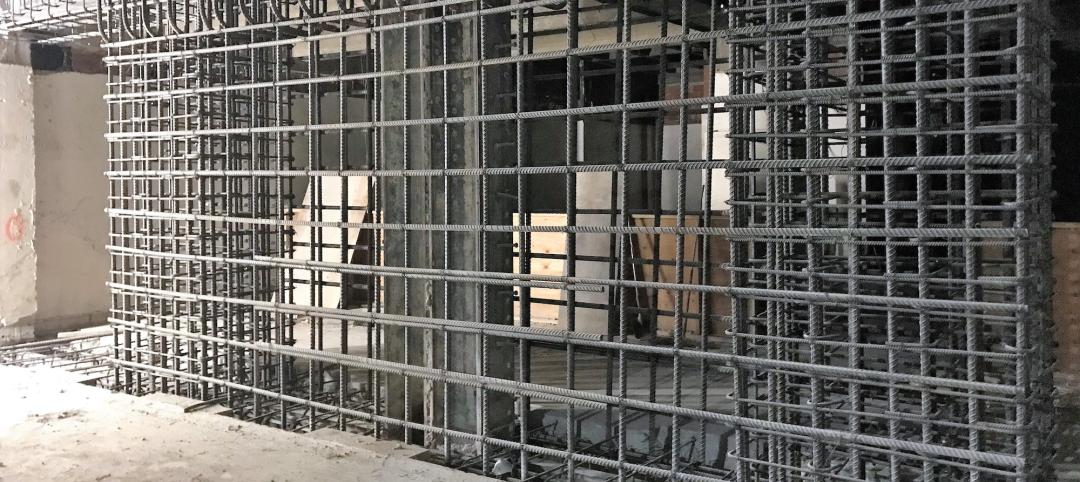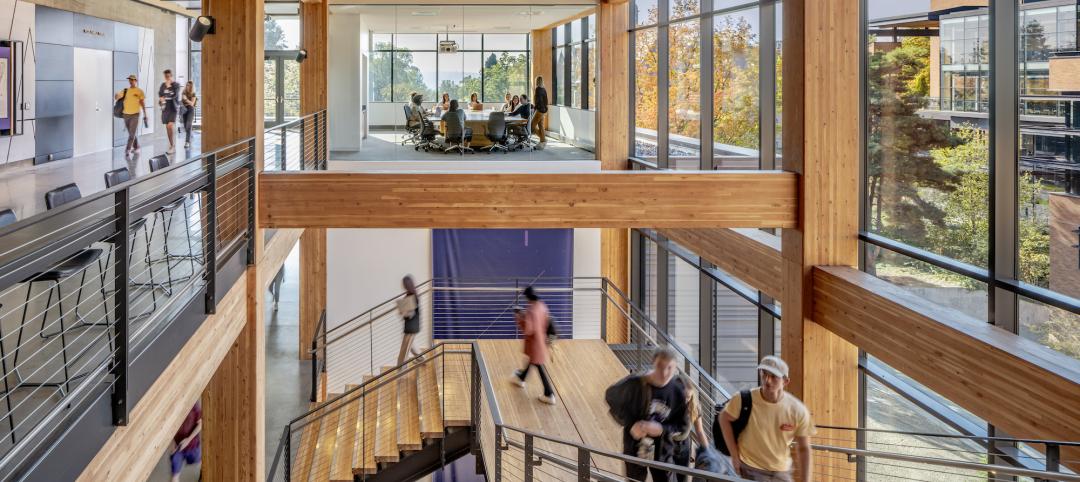Two of the nonresidential building industry’s leading engineering firms have joined forces to leverage their similar sizes and market strategies.
KJWW Engineering, based in Rock Island, Ill., and TTG Engineers, based in Pasadena, Calif., will continue to operate under their own banners, but within a newly created holding company with common management.
Ranked 11th and 14th, respectively, on BD+C’s 2014 Engineering Giants list, the firms’ combined revenues last year would have elevated them to No. 4.
The merger unites two companies with a combined 860 employees working in 25 national and five international locations. “The merger gives TTG and KJWW a larger presence throughout the U.S. and strengthens our collective dominance in the healthcare, higher education, government, entertainment, industrial, and transportation markets,” said Zareh Astrouian, PE, SE, president of TTG. Paul VanDuyne, PE, KJWW’s president, added that the merger “allows us to build on those strengths with greater geographic mobility.”
In an interview with BD+C, VanDuyne—who will be CEO of the holding company, with Astrouian its chairman— said the two firms would spend the next 15 months integrating their operational infrastructure, such as accounting, IT, etc. Over that period, the companies will keep their engineering teams intact, while integrating similar practices. VanDuyne was quick to note that the merger is not a prelude to staff reductions. “Human capital is at such a premium right now, and we would be very happy to go through this process without losing a single person.”
VanDuyne believed this merger would allow both companies to serve national end-user clients more effectively. TTG should gain from KJWW’s strengths in such areas as medical equipment planning and architectural lighting, while KJWW should benefit from TTG’s expertise in the entertainment sector. “We feel this is a great opportunity to take a look at a brand new organization. That’s a little bit extraordinary for two $50 million companies,” he said.
The firms’ executives have been discussing this merger for about a year, said VanDuyne. “It started with a phone call about getting together. We met at [KJWW’s] offices in Chicago, and it went on from there.”
KJWW and TTG announced their merger less than a month after Thornton Tomasetti merged with Weidlinger Associates. While VanDuyne didn’t think these events necessarily presaged more consolidation among engineering companies, he did note that “scale” is becoming more important for firms to be relevant to clients in such areas as BIM and sustainability.
It hasn’t been determined whether the firms would eventually operate out of a single headquarters. That seems unlikely, at least in the near future, especially when Van Duyne said “I don’t think this is the last time you’re going to hear from us about expanding across the country.”
Related Stories
Legislation | Nov 23, 2022
7 ways the Inflation Reduction Act will impact the building sector
HOK’s Anica Landreneau and Stephanie Miller and Smart Surfaces Coalition’s Greg Kats reveal multiple ways the IRA will benefit the built environment.
Multifamily Housing | Nov 22, 2022
10 compelling multifamily developments debut in 2022
A smart home tech-focused apartment complex in North Phoenix, Ariz., and a factory conversion to lofts in St. Louis highlight the notable multifamily developments to debut recently.
Digital Twin | Nov 21, 2022
An inside look at the airport industry's plan to develop a digital twin guidebook
Zoë Fisher, AIA explores how design strategies are changing the way we deliver and design projects in the post-pandemic world.
Industrial Facilities | Nov 16, 2022
Industrial building sector construction, while healthy, might also be flattening
For all the hoopla about the ecommerce boom and “last mile” order fulfillment driving demand for more warehouse and manufacturing space, construction of industrial buildings actually declined over the past five years, albeit marginally by 2.1% to $27.3 billion in 2022, according to estimates by IBIS World. Still, construction in this sector remains buzzy.
Seismic Design | Nov 16, 2022
SPC-4D: 7 reasons California hospital building owners should act now to meet seismic compliance
Seismic compliance with the applicable California building codes is onerous and disruptive for building owners, especially for a building in the heavily regulated sector of healthcare. Owners of older buildings that house acute care services have a big deadline on the horizon—Jan. 1, 2030, the cutoff date to upgrade their buildings to SPC-4D.
Wood | Nov 16, 2022
5 steps to using mass timber in multifamily housing
A design-assist approach can provide the most effective delivery method for multifamily housing projects using mass timber as the primary building element.
Giants 400 | Nov 14, 2022
Top 65 Airport Terminal Engineering + EA Firms for 2022
AECOM, Jacobs, Arup, and Burns & McDonnell head the ranking of the nation's largest airport terminal engineering and engineering/architecture (EA) firms for 2022, as reported in Building Design+Construction's 2022 Giants 400 Report.
Giants 400 | Nov 14, 2022
4 emerging trends from BD+C's 2022 Giants 400 Report
Regenerative design, cognitive health, and jobsite robotics highlight the top trends from the 519 design and construction firms that participated in BD+C's 2022 Giants 400 Report.
Green | Nov 13, 2022
NREL report: Using photovoltaic modules with longer lifetimes is a better option than recycling
A new report from the U.S. National Renewable Energy Laboratory (NREL) says PV module lifetime extensions should be prioritized over closed-loop recycling to reduce demand for new materials.
University Buildings | Nov 13, 2022
University of Washington opens mass timber business school building
Founders Hall at the University of Washington Foster School of Business, the first mass timber building at Seattle campus of Univ. of Washington, was recently completed. The 84,800-sf building creates a new hub for community, entrepreneurship, and innovation, according the project’s design architect LMN Architects.

















